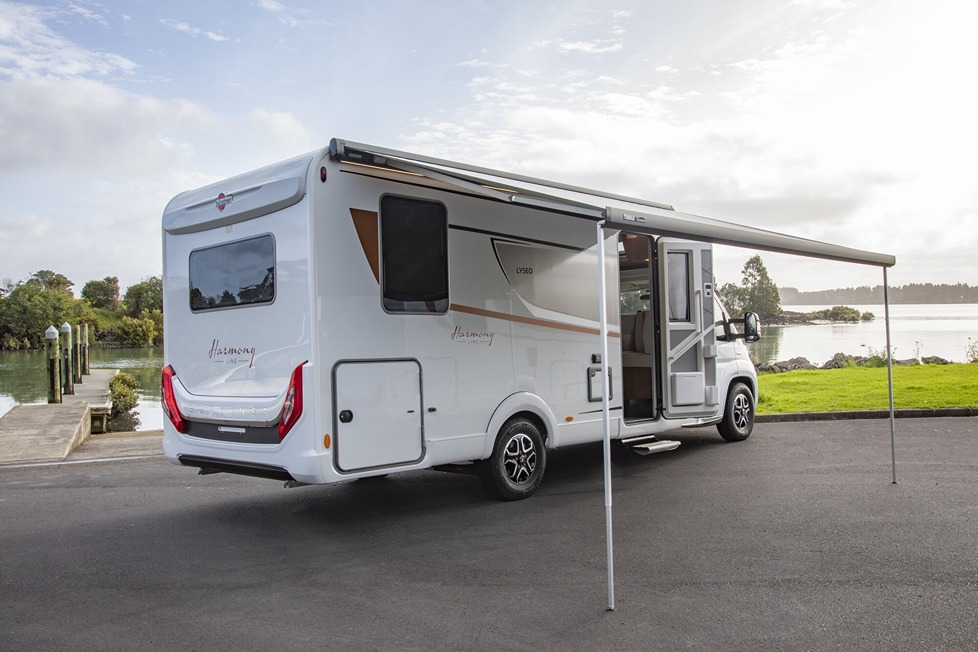
The real estate industry lives or dies by the maxim location, location, location — while motorhome owners tend to have their own mantra of accessorise, accessorise, accessorise.
You can usually spot privately-owned motorhomes and campervans with all the accessories they have on display. Awnings, satellite dishes and outdoor furniture are popular but there’s always the potential to go adventuring with items (and extra weight) you don’t really need.
In this blog, we highlight our ten essential accessories for your RV lifestyle — from bike racks to solar panels and barbecues to levelling systems.
|
Contents |
1. Solar panels
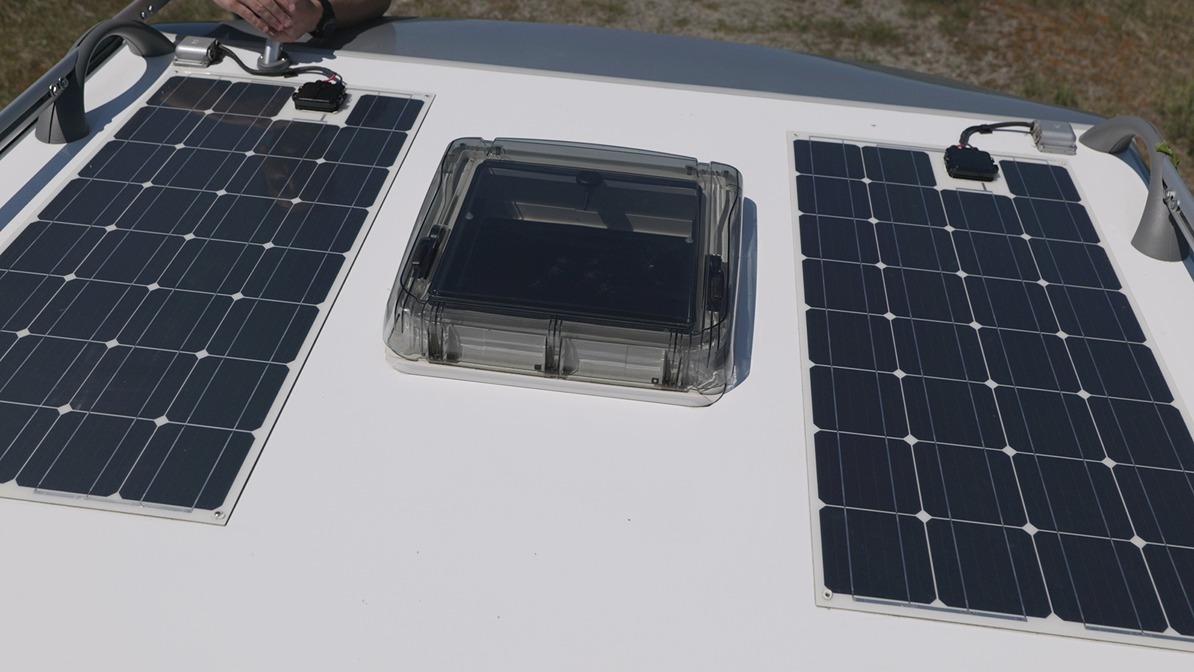
Such is the demand for free solar energy harvesting, many new motorhomes now come with at least one solar panel mounted on the roof.
Adding more panels, and increasing battery storage to take advantage of your greater capacity to capture solar energy, will make your RV less dependent on plugging into the national grid.
A 100 watt (W) solar panel trickling electrons into a 100 amp hour (Ah) absorbed glass mat (AGM) battery can make a significant difference. For example, it will keep your motorhome’s fridge running and the lights on for up to three days.
Double those W and Ah numbers and you’ll be able to enjoy up to a week at independent camping spots. Your solar system will keep your devices charged and ensure that the milk stays cool.
Do you want your solar system to power up the 230 volt (V) plugs dotted throughout your motorhome — rather than just the 12V systems? If so, a serious investment is needed for this kind of full independence. You’ll need:
- A solar panel array — of up to 400W in total capacity
- A 3000W inverter — to transform the 12V current into 230V
- Some serious battery storage — like two 200Ah lithium-ion batteries joined together.
A solar power supply system of this magnitude is required before high-demand tasks like recharging your ebikes can be contemplated.
If you only want to use 230V power to run a CPAP machine at night and grind the coffee beans by day, you’ll need to:
- Add a 1000W inverter to the more modest solar system your motorhome came fitted with, and
- Swap out the AGM domestic battery for a lithium-ion battery equivalent.
This will effectively double your amount of usable power storage. It will also be a lot kinder on your essential accessories budget.
Find out what to look for when buying a used motorhome with solar panels.
|
Increased capacity requires increased storage Any increase in solar panel capacity should be matched with an increase in battery storage, otherwise the extra energy captured by your new panels will be wasted. Learn more about motorhome power in our guide to 12V house batteries and our blog on charging a motorhome battery. |
2. Bike rack
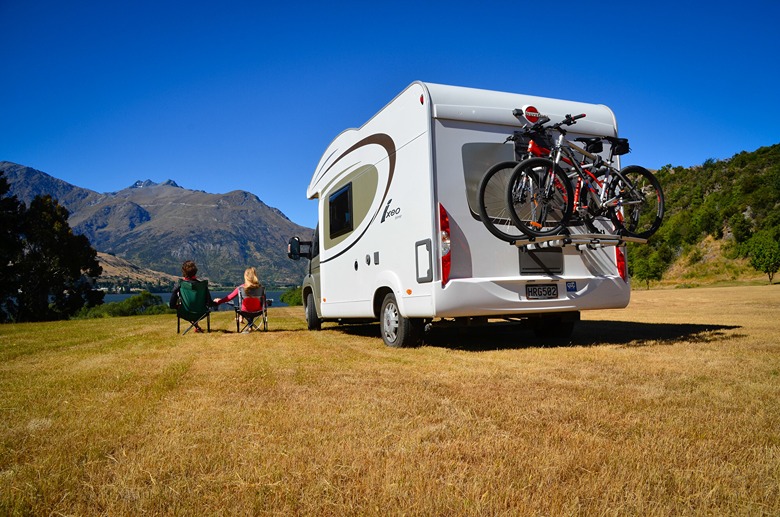
Bicycles are the perfect escape for exploring surrounding areas when your campervan or motorhome is parked up.
You can take a bike or two inside the cabin of your RV — but that risks damage to the interior cabinetry, takes up space and becomes a hazard when braking. The best solution is to fit a bike rack to the exterior of your motorhome.
Bike racks come in many forms and prices — ranging from $500 up to $3000. For a simple fixed rack that fits on a campervan’s rear door like this Thule Sport G2, expect to pay closer to the lower amount.
However, you’ll be looking at a top price for a rear panel rack with a powered height adjuster like this BR Systems Electric Bike Lift. This type of rack can be lowered for easy loading and then raised for extra security. It’s suited to a motorhome that’s strong enough to carry ebikes.
Equip your bikes with saddlebags for carrying necessities on day rides and for cycling down to the nearest store to stock up on supplies.
|
Security is essential Select a bike rack that has locks on the callipers to secure your bikes and better protect them from theft. |
3. Barbecue
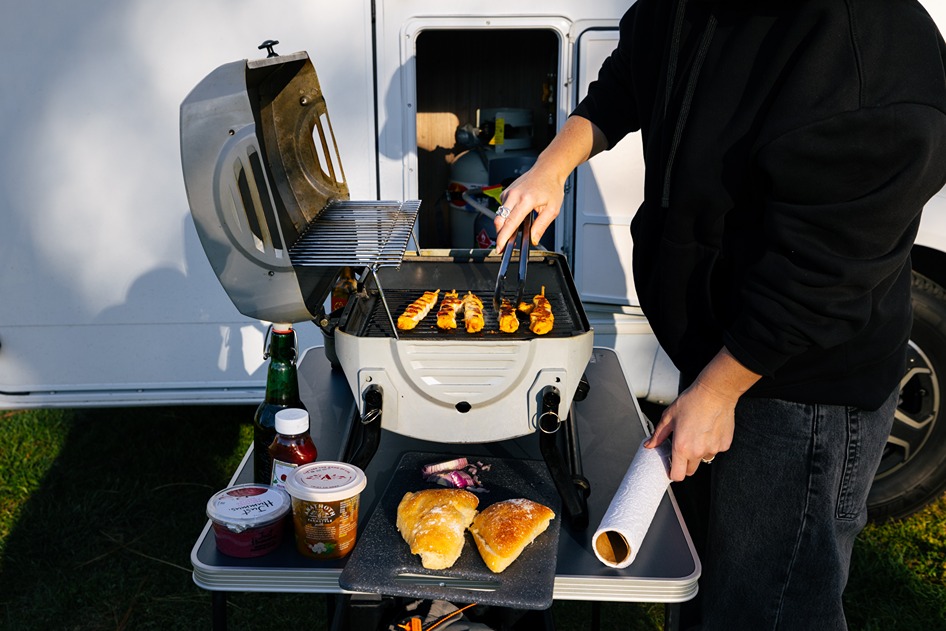
One of the great joys of owning a motorhome is the ability to eat outdoors in a variety of incredible places. Carrying a reliable yet lightweight barbecue can make that happen.
The advantages of packing a small portable barbecue in your motorhome’s garage include:
- Outdoor dining — amongst the sights, sounds and smells of nature
- Versatile cooking — on a barbecue you can grill, smoke, sear and roast to keep your camping cuisine original
- Socialising — often a barbecue is a central gathering point with friends, family or camp neighbours
- Flavour — many people will argue that barbecue food simply tastes better, but whether you agree or not, it does taste different to indoor cooking.
Check out our top barbecue tips for your motorhome road trip.
4. Levelling system
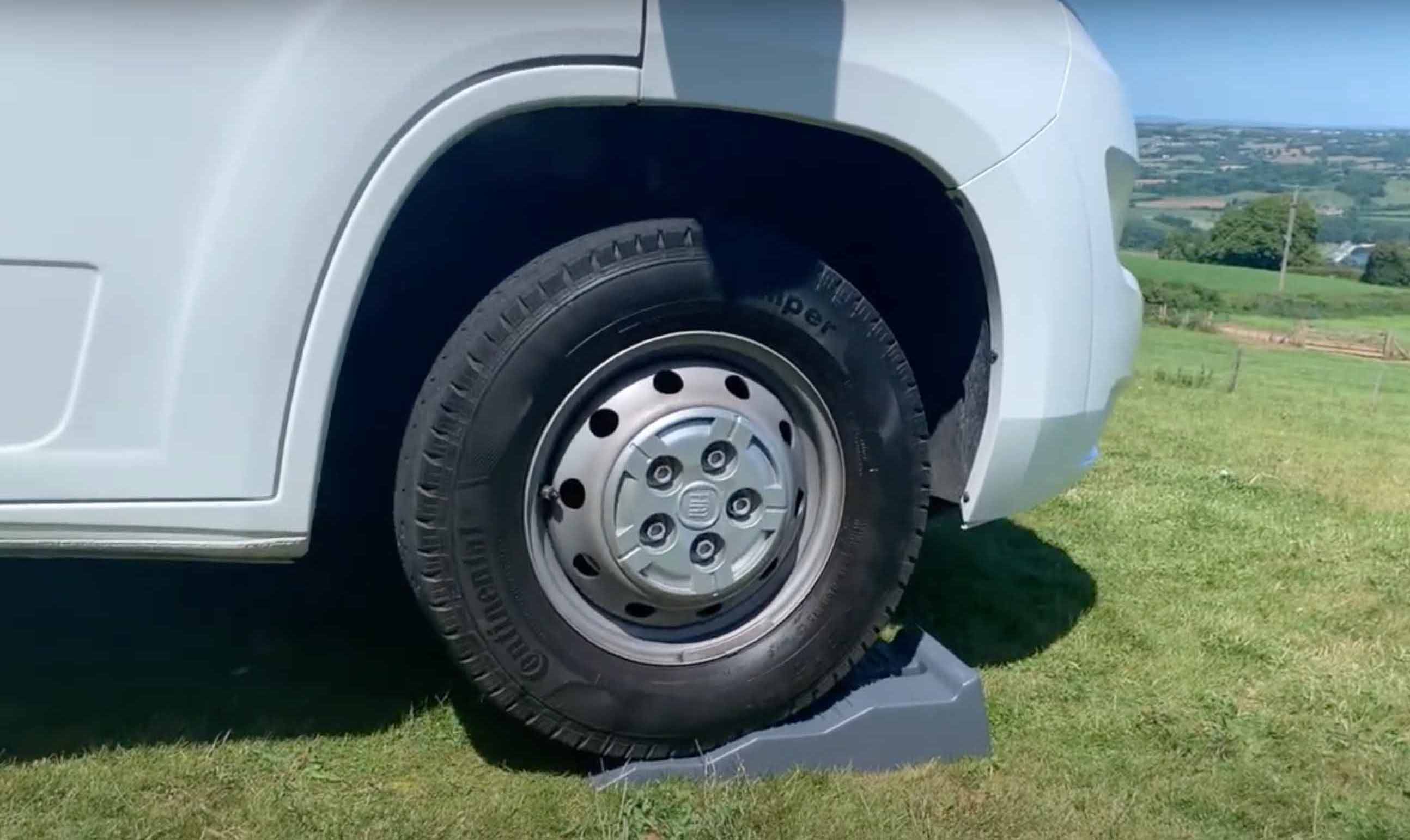
To adjust the height and angle of your motorhome when you have no choice but to park on uneven ground, you’ll need a levelling system. The ability to park so that the floor is level isn’t just an enhancer of camping comfort, it also ensures that your:
- Sleep is more easily achieved — as your body isn’t constantly being ushered towards one side, or end, of the bed
- Motorhome kitchen will be more pleasant to cook in — for example, eggs won’t congregate in one corner of the pan and there’s less chance of a saucepan boiling over
- Fridge will operate properly — especially if it’s an absorption type that's very sensitive to any slope over five degrees and won’t work on a lean
- Plumbing systems work as they’re intended
- Motorhome has a more stable platform when it’s windy or the weather turns bad.
There are two types of levelling systems — manual and automatic.
Manual systems
A manual levelling system is a mechanism designed to stabilise your RV when you’re parked on uneven ground. It involves manually extending and retracting jacks (or blocks) to adjust the height of your recreational vehicle at each corner.
The cheapest levelling system is one that may accompany a motorhome when purchased. It’s likely to be a manual system — using levelling jacks, rubber chocks and a spirit level.
|
Manually levelling your motorhome To make your motorhome level, follow these steps.
|
You may also come across motorhome manufacturers with a keen attention to detail, like Bürstner.
They often mount a couple of levelling ramps in the garage as part of the model’s standard specification.
Some are wedge-shaped while others offer several levels of flat platform with gentle ramps leading to and from each. Selecting the latter will mean that you won’t have to chock, or wedge, the wheels to hold the motorhome in place.
If your motorhome doesn’t come with a levelling system, visit your local RV supply shop for some affordable levelling ramps like these Fiamma Multi Wheel Levels — usually costing around $100.
Manual levelling systems also have a few downsides, including the:
- Physical effort required to operate the jacks or blocks
- Time it may take to get your motorhome level — especially on uneven terrain
- Skill and patience needed to accurately level your RV
- Difficulty operating a manual system in bad weather — where rain and wind can make controls slippery and affect stability
- Safety risks — particularly if you’re not confident working with jacks and blocks.
Self-levelling hydraulic systems
If manually levelling your motorhome is too much of a hassle, consider installing a self-levelling hydraulic system.
Such a system typically uses either hydraulic jacks or electric motors to raise and lower the motorhome's suspension. This type of system will automatically hold your RV in a perfectly level position.
Simply press a button and your motorhome will be level in a matter of minutes. You won’t have to struggle with ramps or worry about whether the RV is level enough.
Another primary reason people install self-levelling hydraulic systems is to use them to lift the rear — allowing the motorhome to climb up a steep angle without bottoming out.
However, there are a few downsides, such as:
- Cost — a push-button system will cost you more than a manual one
- Weight — the hydraulic levelling legs, the pump that activates them, and the electronic control unit will all add extra load.
This makes self-levelling hydraulic systems more suitable for larger RVs where there’s a generous payload that can easily accommodate the extra weight.
Find out more about motorhome levelling systems.
5. Onboard WiFi
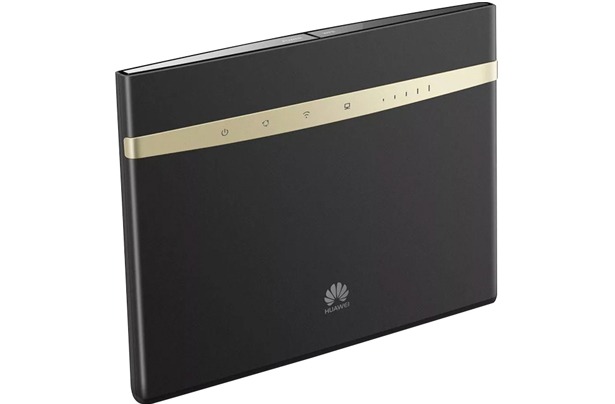
With rising demand for connectivity regardless of where you are on the planet, it’s no surprise that onboard WiFi in privately-owned recreational vehicles is growing. By installing onboard WiFi in your motorhome, you’ll easily be able to:
- Stay connected — with your family and friends when on the road and while off-the-beaten-track
- Keep up-to-date — with current weather, news and nearby events
- Research your next location — finding campsites, booking meals and searching for activities to do
- Be entertained — especially on rainy days when you can listen to music or an audiobook, or stream a movie or television show
- Have peace of mind — knowing that finding out about weather alerts and traffic updates, and contacting loved ones are easier.
A few challenges involved with onboard WiFi can be the setup cost, troubleshooting issues if you’re not technology savvy, and getting reliable internet in remote locations and black spots.
Read this blog on our sister site for reasons why onboard WiFi is useful in a motorhome.
6. USB ports
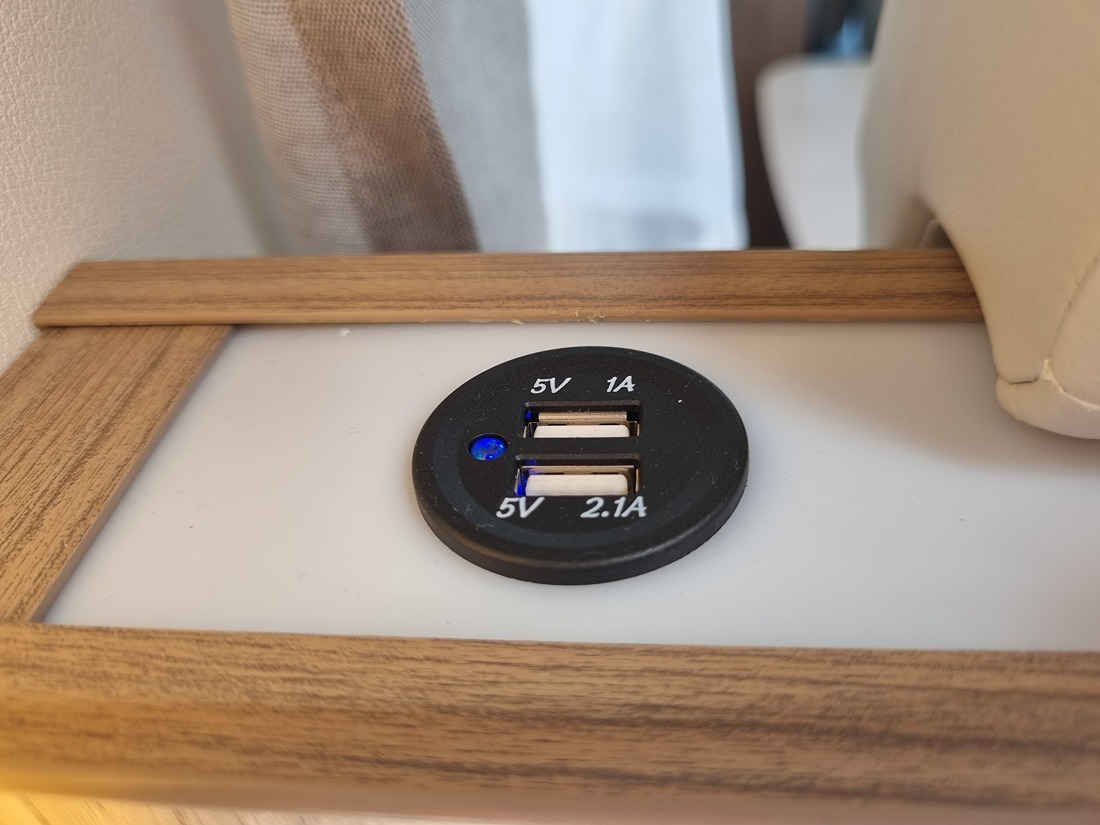
Your RV will likely already have several USB ports installed — especially in the cab area.
USB ports can also often be found in the living area of motorhomes, located handily in the lounge and near the main bed. However, you can never have too many of these ports given the number of devices that tend to accompany us these days.
An easy way to increase the number of ports in your RV is to fit an adapter in the former cigarette lighter socket on your dashboard. Many manufacturers continue to have these in order to power up aftermarket satellite navigation systems, radar detectors and onboard cameras. These adapters will usually give you access to two extra USB ports.
|
USB-A to USB-C Most motorhome manufacturers still only fit USB-type A ports. This is a mild annoyance if you predominantly have USB-type C ports in your devices (such as newer Apple products). Simply purchase an adapter for the dash socket like this Dynamix model — and charge your devices as you need. |
7. Inverter
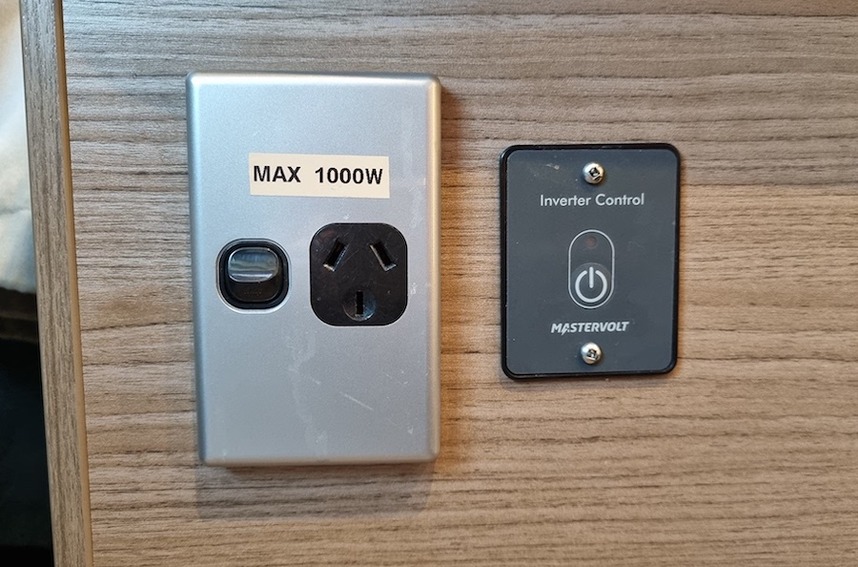
If you use or plan to use your motorhome for camping off-the-beaten-track, one essential accessory must be an inverter. Some of the pros of carrying an inverter onboard your RV are:
- Independence — freedom camping is a lot more comfortable and long-lasting when you can charge your ebikes, laptop and phone without needing mains power
- Convenience — being able to utilise your house battery’s power for appliances that require 230V while you’re off-grid is super convenient
- Flexibility — an inverter allows you to choose more remote scenic locations without mains power
- Emergencies — if you have a medical device like a CPAP machine onboard that needs AC power, an inverter can be a lifesaver.
Learn more about motorhome inverters and how they work.
8. Outdoor furniture
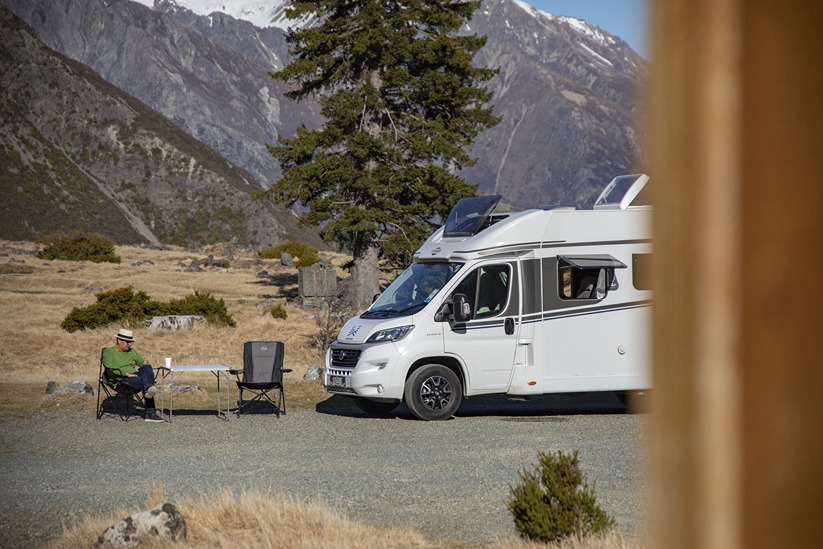
If you prefer freedom camping, then carrying a set of outdoor furniture will be a priority. After all, when venturing into the outdoors, you’ll want to spend as much time as possible actually outdoors.
You’ll gain plenty of advantages by carrying outdoor furniture as an essential accessory onboard your motorhome, such as:
- Spending more time outside — to enhance your motorhome experience through cooking, eating, drinking and conversing in the surroundings of nature
- Expanding your living area beyond the inside of your RV — where there’s extra space for relaxing or entertaining
- Gathering together to socialise, share stories or play cards — with your fellow campers or fellow travellers.
9. Automatic satellite dish
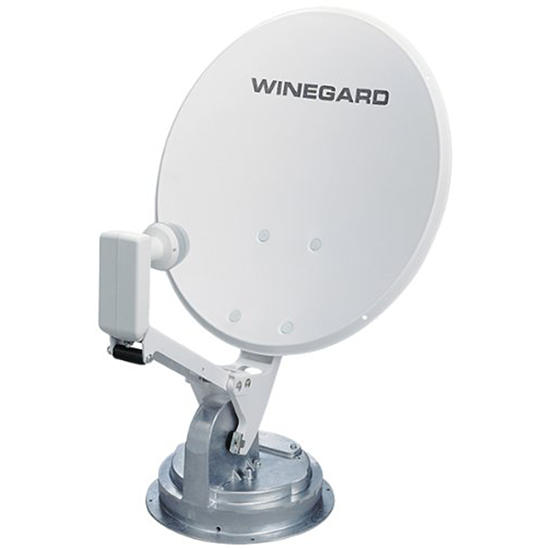
You may not wish to have access to the outside world when remotely parked up in your motorhome. But if you do, an automatic satellite dish instantly opens an on-screen view within a few minutes of settling down for the night.
The benefits of installing a satellite dish on your RV are:
- International access — view any content, even if you’re camping remotely without TV signals or reliable internet
- Convenience — it will automatically lock onto the strongest signal so you can quickly enjoy your favourite programmes
- High-quality images — expect to receive high-resolution images with minimal delay.
|
A top essential no more It wasn’t long ago that automatic satellite dishes were at the top of many RV owners’ essential accessory wishlists. But with new technology preferences can change quickly. The increasing popularity of streaming devices like wired-in Chromecast as alternatives to satellite dishes is one example. Still an essential for some motorhome owners, the cons may have begun to outweigh the pros for many, such as:
|
10. The nice-to-haves
To round out our top ten, we’ve listed a few nice-to-haves that may be essential for enhancing your personal camping experience. For others, they may not be that necessary at all.
Nice-to-have |
Reason |
| Awning | To create shade and help you claim some personal space outside your motorhome — though nearby trees can do the same job. |
| GPS navigation | To plan your route and avoid wrong turns — however, you can also use your cellphone to navigate, and sometimes wrong turns bring pleasant surprises. |
| Extra house battery | If you intend to install solar panels or you already have one and are considering more, you may need another battery for storing the energy. |
| Extra gas bottle | While freedom camping it’s comforting to have a gas bottle in reserve — though not essential if you don’t have to travel far to refill. |
| Spare toilet cassette | Carrying a spare toilet cassette can mitigate unforeseen waste management issues — if you spend long periods off-grid. |
What’s considered an essential motorhome accessory can be highly subjective and personal.
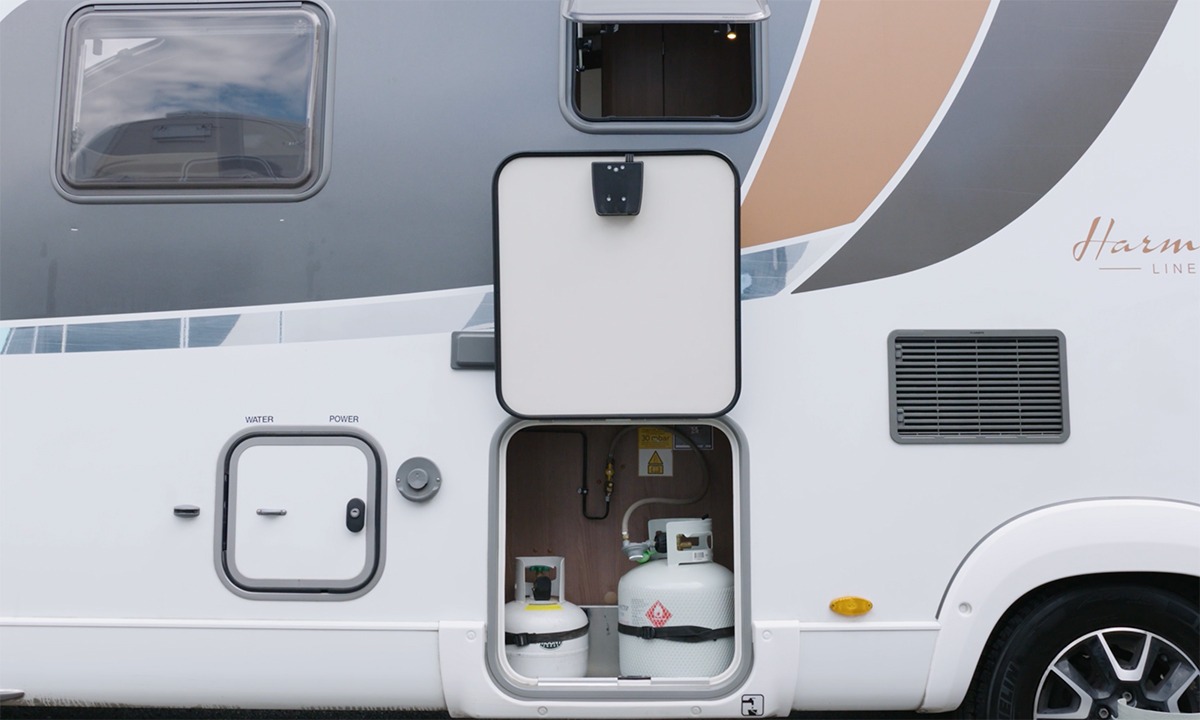
A few of our nice-to-haves may be crucial for your RV adventures. However, just because your camping neighbours have GPS and rave about how it helps them navigate, it may not be essential for you and your travel companions.
Download our buyers’ guide on what features to consider when buying a motorhome.


